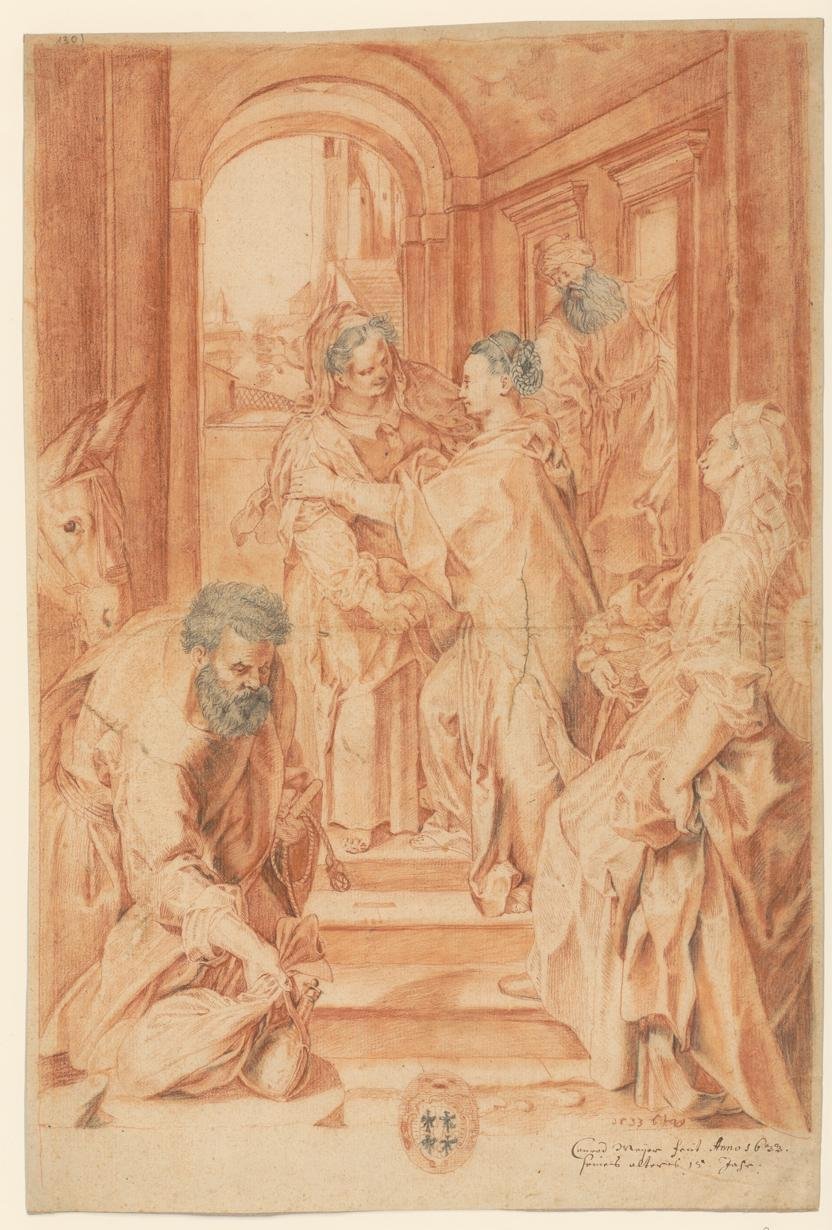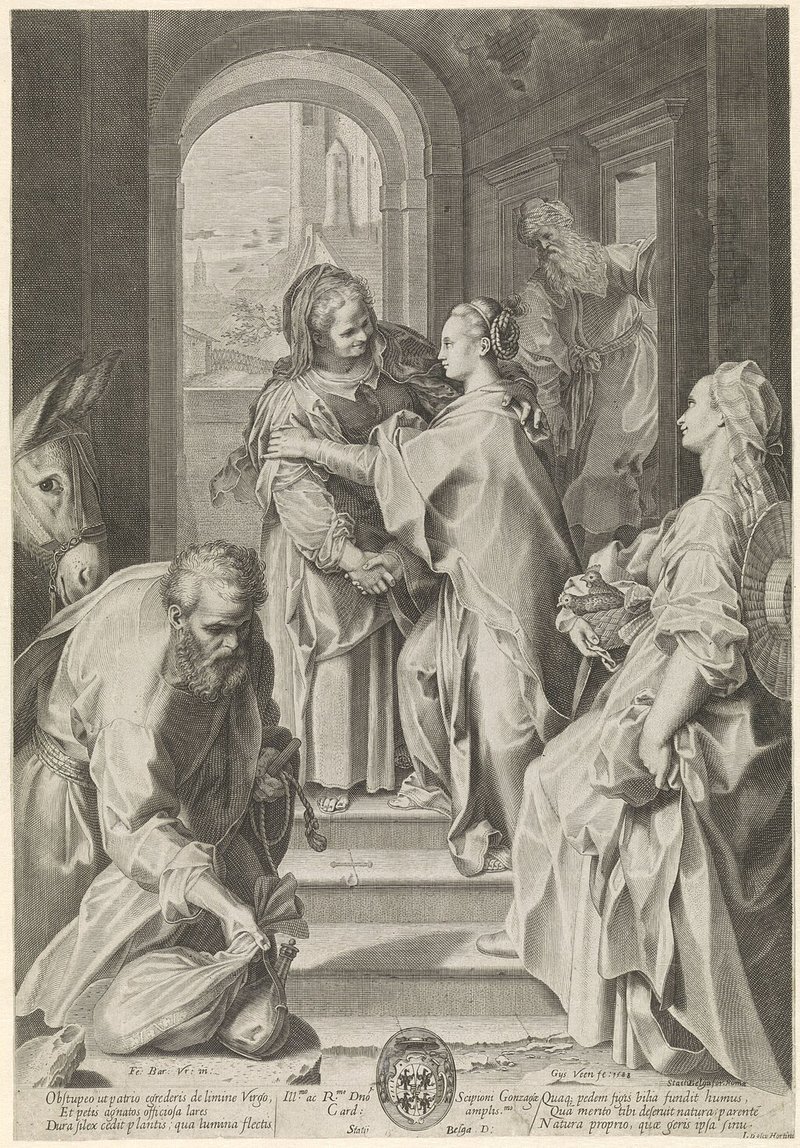Visitation of the Virgin Mary

Conrad Meyer
Mariä Heimsuchung, 1663
Rötel und schwarze Kreide, 44,1 x 29,8 cm, Zentralbibliothek Zürich, Graphische Sammlung
Conrad Meyer was a very devout and pious man. We read this not only in his self-expressions, but it is also evident in his numerous depictions of biblical scenes, which often have a moral undertone.
At the same time, he was very interested in art and was enthusiastic about a wide variety of trends and movements. Both come together in this wonderful red chalk drawing. It is based on an engraving by the Dutchman Gijsbert van Veen, which in turn was based on a painting by the Italian painter Federico Barocci (ca. 1535-1612). The altarpiece can still be seen today in the church of Santa Maria in Vallicella in Rome, where Caravaggio's famous Entombment can also be seen.

Federico Barocci
Mariä Heimsuchung, 1583–1586
Öl auf Leinwand, 300 x 169 cm
Santa Maria in Vallicella, Rom

Gijsbert van Veen, nach Federico Barocci
Mariä Heimsuchung, 1588
Kupferstich, 42,2 x 29,2 cm, Rijksmuseum Amsterdam
It depicts the so-called Visitation of Mary. In this scene from the Bible, Mary, who has just found out that she is pregnant with Jesus, visits her relative Elizabeth. She, in turn, is pregnant with John the Baptist and, according to legend, the two babies bounced happily when they first met. Elizabeth greeted Mary with the famous words: "Blessed are you more than all other women, and blessed is the fruit of your womb." She responded with a song of praise, the Magnificat. They are accompanied by Joseph and a maid with two doves in the foreground and Elizabeth's husband, the priest Zacharias, can be seen in the background.
The combination of techniques that Conrad Meyer used for his drawing is interesting. Most of the work is done with red chalk, a reddish mineral paint that was very popular in the Baroque period and is particularly suitable for fine figure depictions. For the hair, on the other hand, he used black chalk. He also used this for a few contour lines and shadow areas. However, because he had already succeeded so well in creating the plasticity of the figures with red chalk, he hardly needed the dark medium at all.


